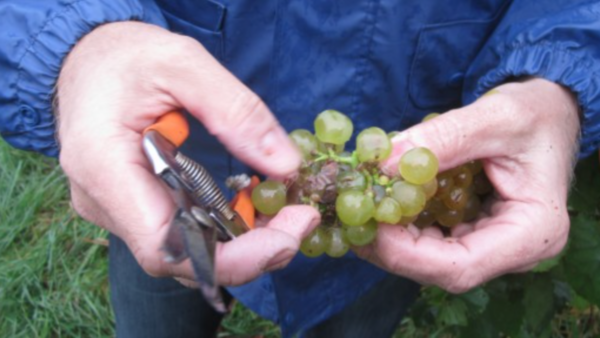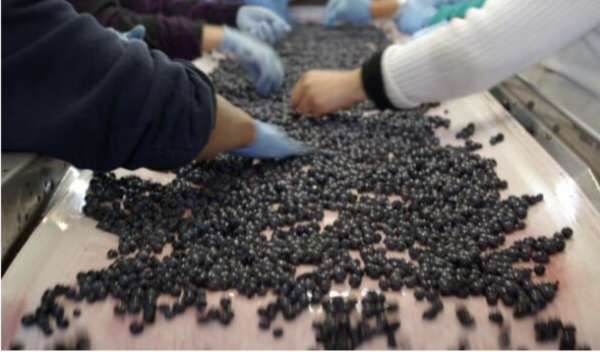
We always make room to talk about the romantic side of wine — all the beautiful places and interesting people responsible for bringing it into being. We speak much less about the sometimes punishing, almost always unglamorous labor involved in producing it. Unpredictable weather patterns are not making the work easier. Early flowering makes vines vulnerable to bud killing frosts; a few moments of hail can all but wipe out a vintage.
In years plagued by such events, the yield of usable fruit can fall dramatically. For your wine corner team, this may mean we have access to a drastically reduced number of cases of some old favorites. In the worst event, none at all.
If you’re a grape, you may be personally grateful to have made it through a challenging vintage, but it’s not a sure thing you’ll make it into the cozy confines of a fermenting vat just yet. Rot — a generalized term for conditions in which fruit suffers from an attack by funguses or other microbes — can take hold even up to the last minute, spoiling individual berries and even entire bunches.
I took the photo at top at Turtle Creek Winery in Lincoln, Massachusetts a few years ago, as harvesters were using their shears not just to collect whole bunches, but to trim out single berries that were clearly affected in this way. All it really takes is a break in the skin of the grape — perhaps because it was pecked by a bird or gnawed by an insect — for rot to set in.
After an anxious start, Turtle Creek’s vintage turned out to be a successful one, but even in good years conscientious growers will carry out a triage, or vineyard selection of this kind, cutting out damaged fruit before it gets to the cellar.
This kind of attention costs the property money, of course, but the alternative is including grapes that have been robbed of their bright, fresh fruit flavors and which may actually taste mouldy. Their presence can have a noticeably negative effect on the final product.
Fruit that’s gotten to the very door of the winery may still have one more hurdle to jump, subjected to a final review at a sorting table just before being processed, as you see below.

Sorting is a tedious, labor-intensive process that requires real skill. You have to be able to eyeball the unripe berry, the pulpy, mouldy berry, the stray leaf or stem while the belt moves them quickly along. But careful work at the sorting table is one of those details that separates run-of-the-mill properties from those consistently making the kind of wine you and I are happy to drink.